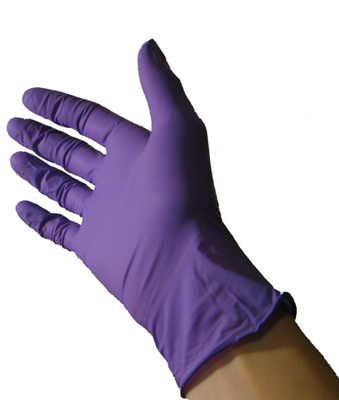 A 41 y/o m presents to your ED after an occupational exposure to 30% hydrofluoric acid (HF). The thumb and index finger of his right hand were affected. Upon visual examination, the site of exposure looks relatively benign but the patient is complaining of extreme pain. Beyond giving opioids, what can you do?
A 41 y/o m presents to your ED after an occupational exposure to 30% hydrofluoric acid (HF). The thumb and index finger of his right hand were affected. Upon visual examination, the site of exposure looks relatively benign but the patient is complaining of extreme pain. Beyond giving opioids, what can you do?
Topical calcium gluconate is the treatment for minor to moderate cutaneous burns from HF.
It would be really nice if there were a commercially available calcium gluconate gel available. Wait, there is! But it’s pretty expensive and most hospitals won’t stock it. Generic versions of 2.5% calcium gluconate gel are also hard to come by.
Trick of the Trade
Make your own calcium gluconate gel
What you’ll need
- Calcium carbonate tablets (Tums®), calcium gluconate powder, or solution
- A water-soluble jelly (any surgical lubricant works great)
How to prepare

Mix any of the following with 5 ounces of surgical lubricant:
- 10 g of calcium carbonate tablets, or
- 3.5 g calcium gluconate powder, or
- 25 mL of calcium gluconate 10% solution
How to administer
- Thoroughly irrigate the area with water.
- Apply your concoction directly to the affected area.
- The best trick is to add the gel into a surgical glove and have the patient wear it for at least 30 minutes.
Don’t expect your gel to look like one you could sell for profit. I’m a pharmacist with training in compounding and it still comes out pretty ugly (especially with Tums®).
Other routes of calcium administration for topical burns include intradermal, intravenous, and intraarterial. An IV Bier block technique using 25 mL of 2.5% calcium gluconate has also showed some success.
Disposition
All patients with digital exposures should be observed over 4-6 hours. The pain usually recurs and you may need to reapply the gel (or maybe even try an alternative therapy). Make sure your patient has good discharge instructions and has access to specialized followup and wound care.
References
- Anderson WJ, Anderson JR. Hydrofluoric acid burns of the hand: mechanism of injury and treatment. J Hand Surg. 1988;13:52-7. [PMID: 3351229]
- Chick LR, Borah G. Calcium carbonate gel therapy for hydrofluoric acid burns of the hand. Plastic Reconstr Surg. 1990;86:935-9. [PMID: 2236319]
- Bracken WM, Cuppage F, McLaury RL, et al. Comparative effectiveness of topical treatments for hydrofluoric acid burns. J Occup Med. 1985;27:733-9. [PMID: 4067676]
- Upfal M, Doyle C. Medical management of hydrofluoric acid exposure. J Occup Med. 1990;32:726-31. [PMID: 2401930]
- Burkhart KK, Brent J, Kirk MA, et al. Comparison of topical magnesium and calcium treatment for dermal hydrofluoric acid burns. Ann Emerg Med. 1994;24:9-13. [PMID: 8010555]
- Kirkpatrick JJ, Burd DAR. An algorithmic approach to the treatment of hydrofluoric acid burns. Burns. 1995;21:495-9. [PMID: 8540974]
- Su M. Chapter 105. Hydrofluoric Acid and Fluorides. In: Su M, ed. Goldfrank’s Toxicologic Emergencies. 9th ed. New York: McGraw-Hill; 2011.
Author information
The post Tricks of the Trade: Calcium gel for hydrofluoric acid burns appeared first on ALiEM.


